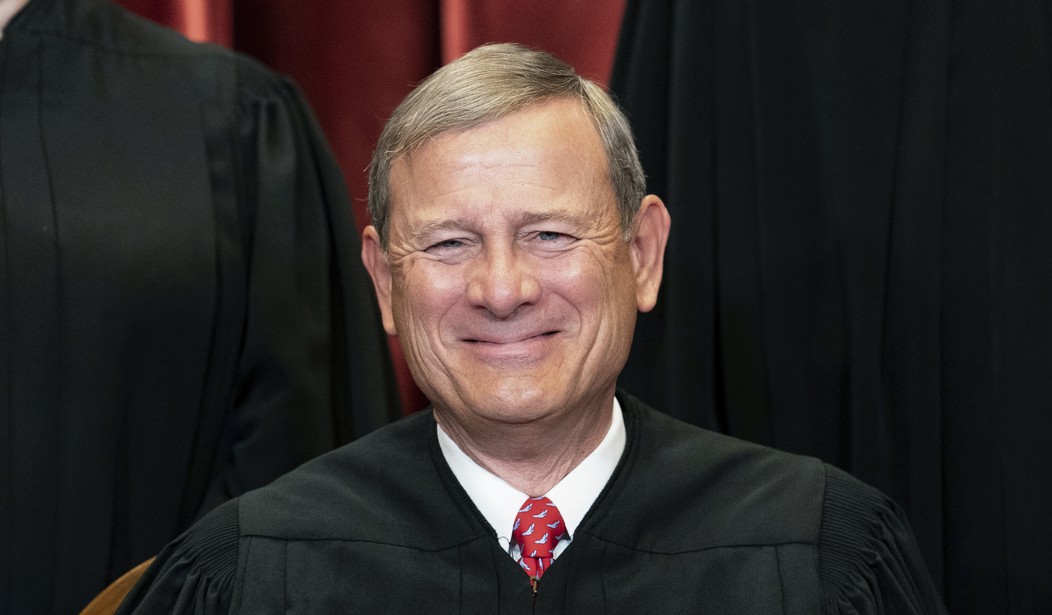Supreme Court Chief Justice John Roberts cites the horrendous Korematsu and Plessy v. Ferguson cases as profiles in judicial courage to right the wrongs of the past. But when given a chance to right an unconstitutional wrong on abortion, he wimped out.
When the draft Supreme Court decision in Dobbs v. Jackson Women’s Health Organization was leaked in May, the vote to overturn Roe v. Wade and its replacement, Planned Parenthood v. Casey, was at 5-4. After Friday’s decision, it’s still 5-4.
Roberts is the man who refashioned the “taxing power” of Obamacare so he wouldn’t have to spike the first black president’s signature legislation — at great cost to American freedom. Roberts is known as a traditionalist who cares more about the institution of the Supreme Court and whether it’s staying out of the press than about the actual decisions. His moves in Obamacare angered his conservative colleagues and were “not consistent, and his legal arguments were not entirely coherent. But he brought people and their different interests together,” according to a book about Roberts.
Roberts is known to whittle, chop, wheedle and trim cases so that the court votes only on a small sliver of the case, leaving remaining issues for another day. And that’s what he tried — and failed — to do in the abortion decisions. In the Dobbs decision, he tried to have it both ways, but none of the conservative justices were picking up what he was throwing down.
Instead, they threw their lot in with Justice Samuel Alito’s painstaking review of the lies, misstatements, and wrong-headed “history” conjured in the Roe and Casey decisions.
As Alito wrote in Friday’s decision:
Roe found that the Constitution implicitly conferred a right to obtain an abortion, but it failed to ground its decision in text, history, or precedent. It relied on an erroneous historical narrative; it devoted great attention to and presumably relied on matters that have no bearing on the meaning of the Constitution; it disregarded the fundamental difference between the precedents on which it relied and the question before the Court; it concocted an elaborate set of rules, with different restrictions for each trimester of pregnancy, but it did not explain how this veritable code could be teased out of anything in the Constitution, the history of abortion laws, prior precedent, or any other cited source; and its most important rule (that States cannot protect fetal life prior to “viability”) was never raised by any party and has never been plausibly explained. Roe’s reasoning quickly drew scathing scholarly criticism, even from supporters of broad access to abortion.
The decisions were completely unmoored from the Constitution. But that didn’t seem to bother Chief Justice Roberts all that much.
Related: West Coast, Messed Coast™ Governors Declare ‘Abortion Offensive’ After Dobbs Decision
Roberts wrote an opinion that concurred with the 6-3 majority that voted to uphold the state of Mississippi in its decision to limit abortions after 15 weeks, but he wouldn’t join the majority in overturning the unconstitutional Roe and Casey decisions, leaving that part of the decision at 5-4. His rationale? It was too dramatic a step. Not that it wasn’t the right thing to do, but that it was too dramatic. And then he affirmed Justice Samuel Alito’s rationale for overturning those decisions.
I would take a more measured course. I agree with the Court that the viability line established by Roe and Casey should be discarded under a straightforward stare decisis analysis. That line never made any sense. Our abortion precedents describe the right at issue as a woman’s right to choose to terminate her pregnancy.
None of this, however, requires that we also take the dramatic step of altogether eliminating the abortion right first recognized in Roe. Mississippi itself previously argued as much to this Court in this litigation.
…Here, there is a clear path to deciding this case correctly without overruling Roe all the way down to the studs: recognize that the viability line must be discarded, as the majority rightly does, and leave for another day whether to reject any right to an abortion at all.
Pure Roberts.
Alito didn’t let him get away with it.
“We now turn to the concurrence in the judgment, which reproves us for deciding whether Roe and Casey should be retained or overruled. That opinion (which for convenience we will call simply “the concurrence”) recommends a “more measured course,” which it defends based on what it claims is “a straightforward stare decisis analysis.” …The concurrence would “leave for another day whether to reject any right to an abortion at all,”… and would hold only that if the Constitution protects any such right, the right ends once women have had “a reasonable opportunity” to obtain an abortion… The concurrence does not specify what period of time is sufficient to provide such an opportunity, but it would hold that 15 weeks, the period allowed under Mississippi’s law, is enough—at least “absent rare circumstances.” … There are serious problems with this approach, and it is revealing that nothing like it was recommended by either party. As we have recounted, both parties and the Solicitor General have urged us either to reaffirm or overrule Roe and Casey.”
In his decision, Alito cited example after example of legal scholars dunking on Roe because it was so poorly decided and unconnected to this thing called the constitution. He spared mentioning Ruth Bader Ginsburg, who also noted in the year before she died that Roe was bad law.
Related: The Key Ways Justice Thomas Vanquished Gun Grabbers in his Bruen Decision
Roe was also egregiously wrong and deeply damaging. For reasons already explained, Roe’s constitutional analysis was far outside the bounds of any reasonable interpretation of the various constitutional provisions to which it vaguely pointed.
Roe was on a collision course with the Constitution from the day it was decided, Casey perpetuated its errors, and those errors do not concern some arcane corner of the law of little importance to the American people. Rather, wielding nothing but ‘raw judicial power.’ …
We end this opinion where we began. Abortion presents a profound moral question. The Constitution does not prohibit the citizens of each State from regulating or prohibiting abortion. Roe and Casey arrogated that authority. We now overrule those decisions and return that authority to the people and their elected representatives.”
Nearly 50 years of unconstitutional law is ordered extinguished:
“It is so ordered.”
No thanks to John Roberts.










Join the conversation as a VIP Member